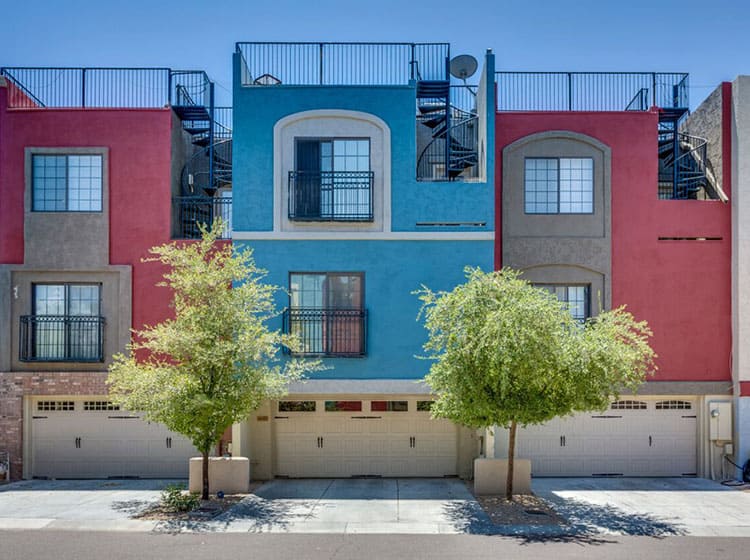Distinguishing Between Interior And Exterior Paint: Significant Distinctions And Their Uses
Distinguishing Between Interior And Exterior Paint: Significant Distinctions And Their Uses
Blog Article
Write-Up Composed By-Hastings Bernstein
When you're selecting in between interior and exterior paint, it's necessary to understand their essential distinctions that impact both efficiency and aesthetics. Interior paints are crafted for lower VOC degrees and smoother surfaces, making them suitable for indoor rooms, while exterior paints are designed to endure rough weather and UV exposure. Each kind serves a distinct purpose, yet recognizing when to use one over the various other can significantly affect your task's outcome. So, what factors should you take into consideration when making your choice?
Composition and Solution
When choosing in between exterior and interior paint, comprehending their structure and formula is important. Interior paints generally include a lower quantity of unstable natural compounds (VOCs), making them more secure for indoor air high quality. You'll notice they typically have a smoother surface, which improves their ability to withstand spots and enables simpler cleaning. They're made to stand up to the roughness of indoor settings, including varying humidity degrees and temperature level changes.
On the other hand, exterior paints are created to withstand harsher conditions. They usually contain greater levels of pigments and additives to stand up to fading from UV rays, along with to prevent mold and mold development. Their composition consists of more binders and materials, which give better bond to surfaces revealed to the components. This makes certain the paint can hold up against rainfall, snow, and rising and fall temperature levels without peeling or fracturing.
Efficiency and Resilience
Assessing efficiency and sturdiness is essential when picking between exterior and interior paint. Interior paint is designed for surface areas that experience much less deterioration. It usually stands up to fading and scuffing, making it perfect for living areas and bed rooms. Nevertheless, straightline house painting might not stand up well in high-moisture areas like bathroom and kitchens without proper solution.
On the other hand, exterior paint faces harsher conditions. It's crafted to endure UV rays, rain, and temperature variations. This kind of paint typically has additives that protect against mold and mold development, making certain long life in different climates. When you use exterior paint, you can expect it to last several years much longer than interior paint, offered it's used correctly.
An additional vital difference depends on the finish options. Inside paints commonly have a selection of coatings for visual allure, while outside paints prioritize sturdiness over sheen. If you're searching for something that can manage the components, exterior paint is your best choice.
On https://home-painters-near-me77743.blogproducer.com/38071262/identify-the-crucial-factors-to-consider-to-keep-in-mind-when-hiring-a-paint-specialist-for-your-home-to-accomplish-an-effective-change , if you're concentrated on interior aesthetic appeals with much less issue for extreme problems, indoor paint might be ideal. Eventually, your choice ought to straighten with the particular needs of the atmosphere.
Visual Factors to consider
A fresh layer of paint can change a space, however visual factors to consider play a critical duty in your selection between interior and exterior alternatives. When you're selecting paint, think about the state of mind you want to create. Inside paint permits you to discover a wider variety of colors and finishes, allowing you to reveal your individual design and enhance your home's setting. Whether you choose soft pastels or vibrant hues, the ideal indoor paint can make your spaces really feel relaxing, vibrant, or tranquil.
On the other hand, outside paint needs to align with your home's architecture and the surrounding setting. Here, you're not simply making a design statement; you're likewise thinking about aesthetic appeal. Picking colors that integrate with your neighborhood can boost your home's value and visual appeal. Keep in mind that outside paint is likewise based on fading and climate adjustments, so picking a classic shade can conserve you from regular repainting.
Inevitably, think about how each alternative fits your vision. By aligning your paint option with your desired visual, you can create spaces that reflect your personality while keeping functionality.
Final thought
When it comes to choosing paint, comprehending the key differences between interior and exterior alternatives is important. Inside paints focus on looks and low VOCs, making them perfect for enhancing your interior areas. On the other hand, outside paints are developed for sturdiness and weather resistance, shielding your home from the aspects. By considering your details demands and the atmosphere, you can confidently select the appropriate paint to accomplish the appearance and durability you prefer for your room.
